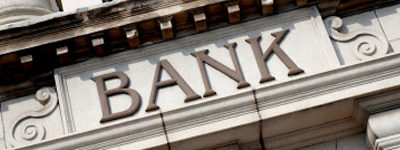%
Jubak’s Picks Performance 1997-2019
Jubak’s Picks
Buy and hold? Not really.
Short-term trading?
Not by a long shot.
So what is the stock-picking style of The Jubak’s Picks portfolio?
Click to expand...
Click to View the Jubak’s Picks Portfolio
I try to go with the market’s momentum when the trend is strong and the risk isn’t too high, and I go against the herd when the bulls have turned piggy and the bears have lost all perspective. What are the results of this moderately active — the holding period is 12 to 18 months — all-stock portfolio since inception in May 1997? A total return of 584% as of December 31, 2019. That compares to a total return on the S&P 500 stock index of 335% during the same period.
%
Top 50 Stocks Performance 2019
Top 50 Stocks
This long-term, buy-and-holdish portfolio was originally based on my 2008 book The Jubak Picks.
Trends that are strong enough, global enough, and long-lasting enough to surpass stock market averages.
Click to expand...
Click to view the Top 50 Stocks Portfolio
In The Jubak’s Picks Portfolio I identified ten trends that were strong enough, global enough, and long-lasting enough to give anyone who invested in them a good chance of beating the stock market averages.
To mark the publication of my new book on volatility, Juggling with Knives, and to bring the existing long-term picks portfolio into line with what I learned in writing that book and my best new ideas on how to invest for the long-term in a period of high volatility, I’m completely overhauling the existing Top 50 Picks portfolio.
You can buy Juggling with Knives at bit.ly/jugglingwithknives
%
Dividend Income Performance 2021
Dividend Income
Every income investor needs a healthy dose of dividend stocks.
Why bother?
Why not just concentrate on bonds or CDs?
Click to expand...
Click to view the Dividend Income Portfolio
Because all the different income-producing assets available to income investors have characteristics that make them suited to one market and not another. You need all of these types of assets if you’re going to generate maximum income with minimum risk as the market twists and turns.
For example: bonds are great when interest rates are falling. Buy early in that kind of market and you can just sit back and collect that initial high yield as well as the capital gains that are generated as the bonds appreciate in price with each drop in interest rates.
CDs, on the other hand, are a great way to lock in a yield with almost absolute safety when you’d like to avoid the risk of having to reinvest in an uncertain market or when interest rates are crashing.
Dividend stocks have one very special characteristic that sets them apart from bonds and CDs: companies raise dividends over time. Some companies raise them significantly from one quarter or year to the next. That makes a dividend-paying stock one of the best sources of income when interest rates start to rise.
Bonds will get killed in that environment because bond prices will fall so that yields on existing bonds keep pace with rising interest rates.
But because interest rates usually go up during periods when the economy is cooking, there’s a very good chance that the company you own will be seeing rising profits. And that it will raise its dividend payout to share some of that with shareholders.
With a dividend stock you’ve got a chance that the yield you’re collecting will keep up with rising market interest rates.
But wouldn’t ya know it?
Just when dividend investing is getting to be more important—becoming in my opinion the key stock market strategy for the current market environment—it’s also getting to be more difficult to execute with shifting tax rates and special dividends distorting the reported yield on many stocks.
I think there’s really only one real choice—investors have to pull up their socks and work even harder at their dividend investing strategy. That’s why I revamped the format of the Dividend Income portfolio that I’ve been running since October 2009. The changes aren’t to the basic strategy. That’s worked well, I think, and I’ll give you some numbers later on so you can judge for yourself. No, the changes are designed to do two things: First, to let you and me track the performance of the portfolio more comprehensively and more easily compare it to the performance turned in by other strategies, and second, to generate a bigger and more frequent roster of dividend picks so that readers, especially readers who suddenly have a need to put more money to work in a dividend strategy, have more dividend choices to work with.
Why is dividend investing so important in this environment? I’ve laid out the reasons elsewhere but let me recapitulate here. Volatility will create repeated opportunities to capture yields of 5%–the “new normal” and “paranormal” target rate of return–or more as stock prices fall in the latest panic. By using that 5% dividend yield as a target for buys (and sells) dividend investors will avoid the worst of buying high (yields won’t justify the buy) and selling low (yields will argue that this is a time to buy.) And unlike bond payouts, which are fixed by coupon, stock dividends can rise with time, giving investors some protection against inflation.
The challenge in dividend investing during this period is using dividend yield as a guide to buying and selling without becoming totally and exclusively focused on yield. What continues to matter most is total return. A 5% yield can get wiped out very easily by a relatively small drop in share price.
Going forward, I will continue to report on the cash thrown off by the portfolio—since I recognize that many investors are looking for ways to increase their current cash incomes. But I’m also going to report the total return on the portfolio—so you can compare this performance to other alternatives—and I’m going to assume that an investor will reinvest the cash from these dividend stocks back into other dividend stocks. That will give the portfolio—and investors who follow it—the advantage of compounding over time, one of the biggest strengths in any dividend income strategy.
What are some of the numbers on this portfolio? $29,477 in dividends received from October 2009 through December 31, 2013. On the original $100,000 investment in October 2009 that comes to a 29.5% payout on that initial investment over a period of 39 months. That’s a compound annual growth rate of 8.27%.
And since we care about total return, how about capital gains or losses from the portfolio? The total equity price value of the portfolio came to $119,958 on December 31, 2012. That’s a gain of $19,958 over 39 months on that initial $100,000 investment or a compound annual growth rate of 5.76%.
The total return on the portfolio for that period comes to $49,435 or a compound annual growth rate of 13.2%.
How does that compare to the total return on the Standard & Poor’s 500 Stock Index for that 39-month period? In that period $100,000 invested in the S&P 500 would have grown to $141,468 with price appreciation and dividends included.) That’s a total compounded annual rate of return of 11.26%.
That’s an annual 2 percentage point advantage to my Dividend Income portfolio. That’s significant, I’d argue, in the context of a low risk strategy.
Portfolio Related Posts
Do you have the patience for the Permian? Should you?
It hasn’t exactly been a great few months oil shale producers in the Permian Basin. Shares of Pioneer Natural Resources (PXD), the biggest pure play on Permian oil, closed at $169.97 a share today, August 29, down from $212.31 a share on May 18. That’s a decline of 17.3% at a time when prices for benchmark crude such as West Texas Intermediate and Brent has been climbing. Shares of peer Permian producer Diamondback Energy (FANG) are down 10.5% over the same period. The problem?
Dividend Portfolio member Independent Bank beats on earnings and revenue
On July 25 after the market close Independent Bank (IBCP) reported earnings of 44 cents a share, 5 cents a share above Wall Street estimates and a year over year increase of 48.7%. That was up from earnings of 27 cents a share in the second quarter of 2017. Revenue of $41.3 million was 6.7% above Wall Street projections.
Nektar beats on earnings–more importantly FDA accepts company’s new opioid for review
After the market close on Wednesday, August 8, Nectar Therapeutics (NKTR) reported earnings of $5.33 a share for the second quarter of 2018. That matched Wall Street projections. The huge jump in earnings from the 39 cents a share loss in the second quarter of 2017 was a result of Nektar’s billion dollar up front payment in April from Bristol-Myers (BMY). That drove revenue to $1.09 billion in the quarter from $34.6 million in the second quarter of 2017. Revenue from product sales, however, fell 62.6% to $5.9 million in the quarter, down from $15.7 million in the second quarter of 2017. In past quarters when Nektar has missed on earnings or revenue, I’ve argued that neither were terribly important for a development stage biotechnology company. The product pipeline and developments on those products are what counts. And I’m going to argue the same thing this quarter even on the huge jump in revenue and earnings. News from the product pipeline has been very solid recently.
Randgold increases production, misses estimates on continued low price of gold
The relentless downward trend in the price of gold took a big bite out of shares of Randgold Resources (GOLD) in the second quarter. The company reported a drop of 15.8% in total revenue year over year. Diluted earnings per share were 54 cents against 88 cents in the second quarter of 2017 and missed Wall Street projections by 5 cents a share.
White House announces trade deal with Mexico to replace NAFTA
If you’re looking for a reason for U.S. stocks to keep climbing from current highs, this morning’s event at the White House is a big deal. President Donald Trump announced that the U.S. and Mexico have reached a bilateral trade agreement that would replace the 1993 NAFTA agreement among the United States, Mexico, and Canada. Although Canada isn’t a party to the agreement announced this morning, the hope is, the White House says, that Canada will come abroad very quickly, perhaps as early as Friday. Now the agreement announced this morning isn’t actually a fully fleshed out trade agreement.
Incyte beats on revenue, misses on earnings; reports good progress in pipeline
On July 30 Incyte (INCY) reported second quarter earnings of 26 cents a share, 4 cents below the Wall Street projection of 30 cents a share. Revenue was up $521.5 million, an increase of 59.7% year over year. That was ahead of Wall Street projections for $464.8 million in revenue. A large part of that pop came from a milestone payment of $100 million. But product revenue grew by 29% year over year to $421.5 million. The bulk of that was from sales of Jakafi, the company’s flagship drug to date. Revenue from Jakafi climbed to $345.6 million in the quarter, up 25% year over year.
Although Incyte is closer to a established drug company on sales of Jakafi, this is still a early stage biotech where it’s the pipeline that counts. Back in April the shares took a pounding on disappointing news from a drug trial. Shares, which had traded at $83.07, closed at $64.44 on August 10.
The news from the pipeline, however, is encouraging.
Buying Cummins today for my Dividend Portfolio
In my on-going Special Report: 10 Best Stocks in 10 Sectors (running on my JubakAM.com subscription site) I laid out the case for buying Cummins (CMI) now a a dividend stock with the expectation that as the current depression over the share price of industrial exporters lifts, the buy will also generate very attractive capital gains. Here’s the logic that I laid out in the Special Report: “By now I think it’s clear that management smarts are at least as important as technology in making money in the transition to electric vehicles. (Tesla (TSLA) and Elon Musk make up a good case study.) And I think it’s reasonable to assume on initial reaction to Tesla’s announcement of an intention to enter the electric truck market that dealer infrastructure will be make or break for the introduction of this new technology. If all of that is true–whether the company in question is a pure play electric vehicle start up or a legacy vehicle company trying make the transition to an electric vehicle future–then my pick in this sub-sector is truck-engine maker Cummins.
Buying Albermarle today for my Jubak Picks Portfolio
Who says the collapse of the Turkish lira and of the Turkish stock market isn’t good news for anyone? While it’s certainly true that the troubles in Turkey–which have become worse as the country’s relationship with the United States has tipped for mild disagreement to disfunction–have sent a shudder through all emerging markets at a time when those markets don’t need anything new to worry about. But the sell off in Turkey and the weakness in emerging markets has also led to a knee-jerk retreat in commodity prices. Which is actually good news if you were looking to buy a commodity stock today–which I was–and if the commodity in question has nothing to do with the Turkish market or economy. Let’s get this straight. I was going to add shares of lithium producer Albemarle (ALB) to my Jubak Picks Portfolio anyway today.










